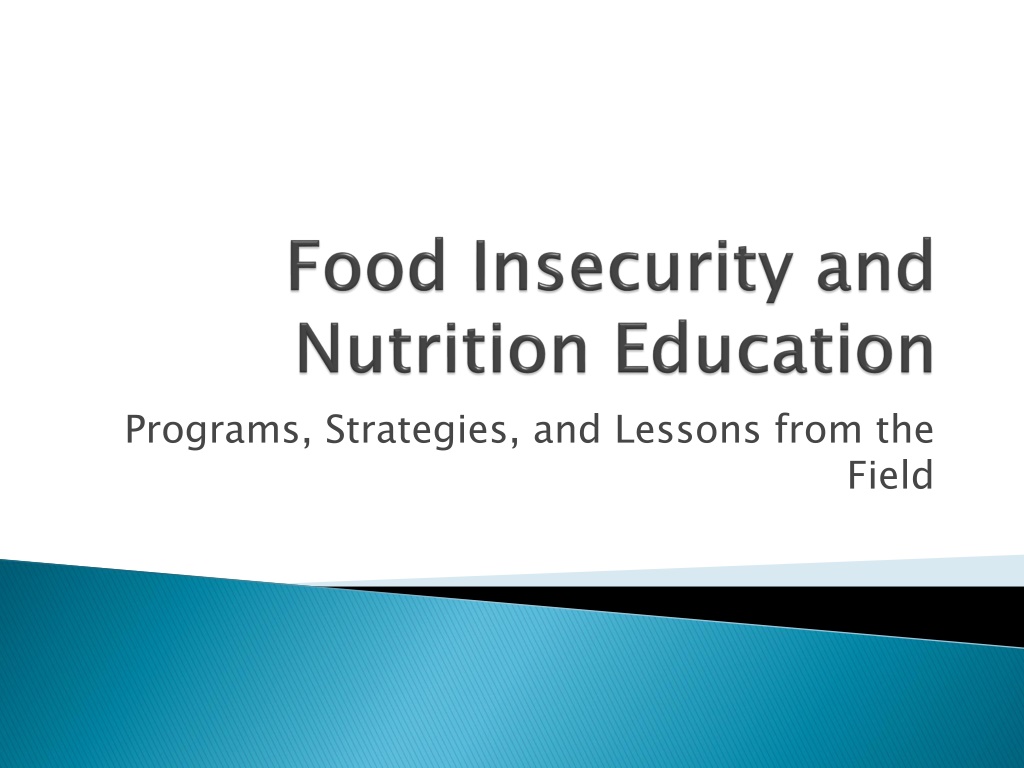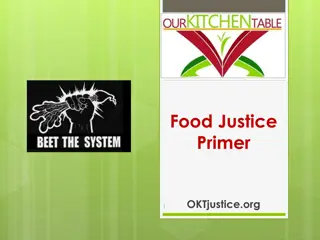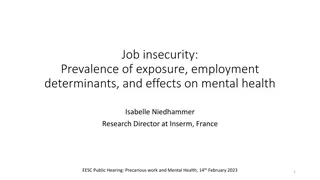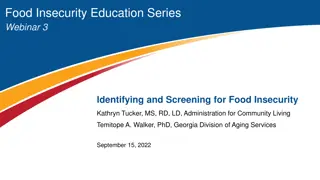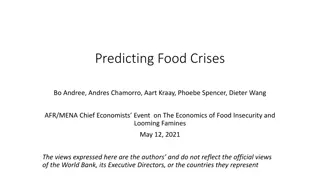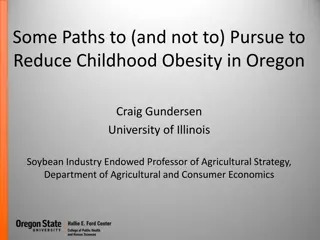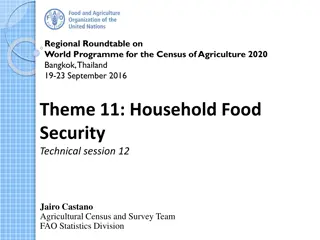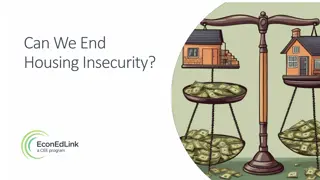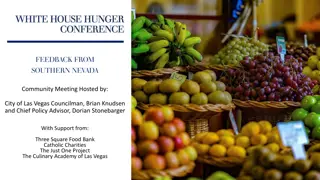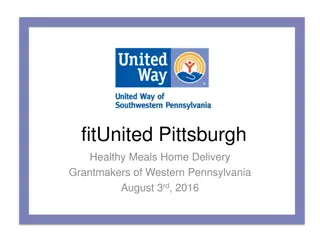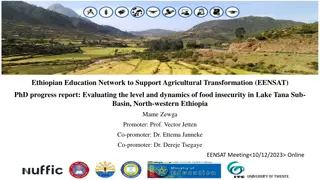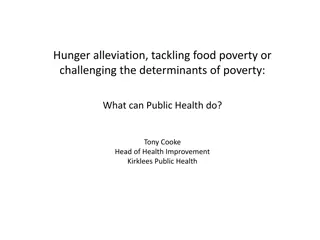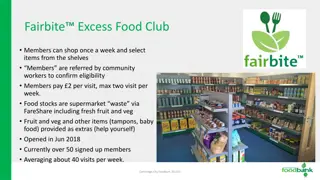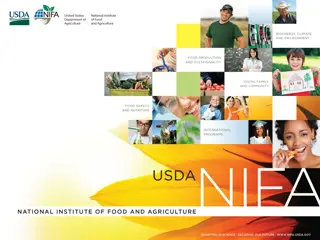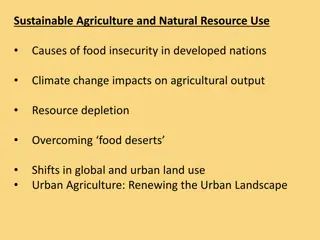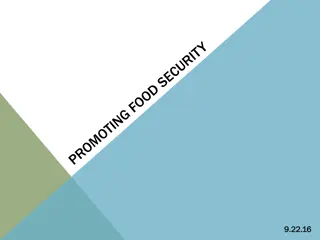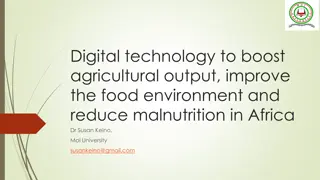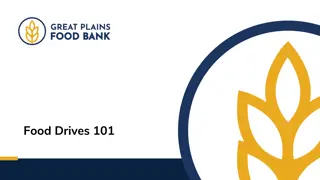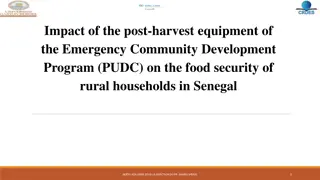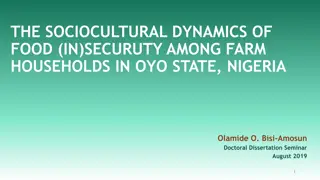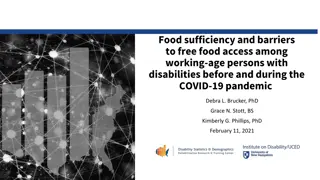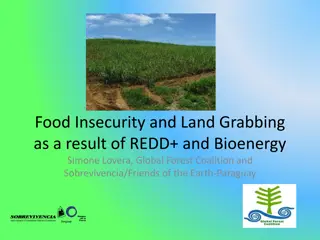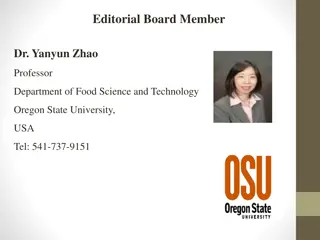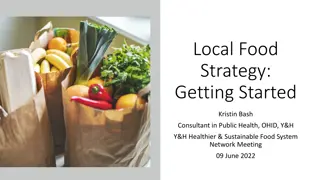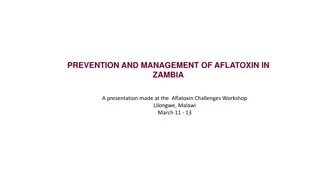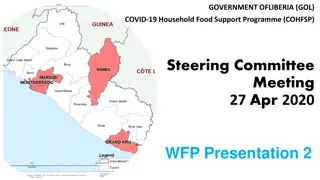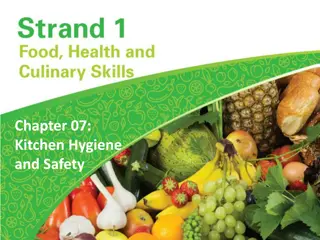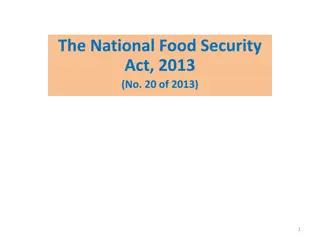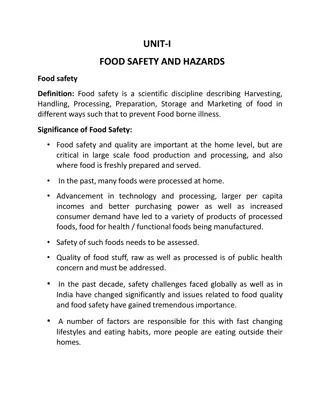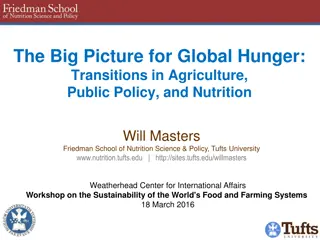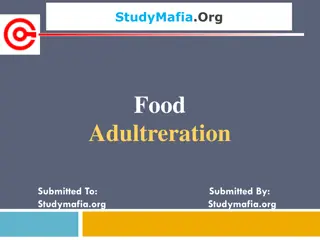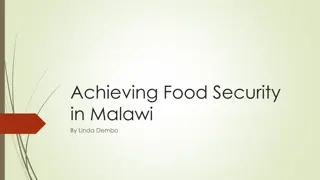Food Insecurity Programs and Strategies: A Comprehensive Analysis
Explore the various programs, strategies, and lessons in the field of addressing food insecurity, including insights on different levels of food security, statistics on insecure households, and initiatives like the National School Lunch Program and Emergency Food Assistance Program. Learn about the challenges and efforts to combat food insecurity in the United States.
Download Presentation

Please find below an Image/Link to download the presentation.
The content on the website is provided AS IS for your information and personal use only. It may not be sold, licensed, or shared on other websites without obtaining consent from the author. Download presentation by click this link. If you encounter any issues during the download, it is possible that the publisher has removed the file from their server.
E N D
Presentation Transcript
Low food security: Reports of reduced quality, variety, or desirability of diet. Little or no indication of reduced food intake. Very low food security: Reports of multiple indications of disrupted eating patters and reduced food intake. 2
15.8 million US households were food insecure in 2015 3 million households with children 6.3 million US households experienced very low food security 274,000 households with children 3
15.8 million US households were food insecure in 2015 More than the population of North Carolina and Minnesota combined. 3 million households with children Nearly the population of Mississippi. Households =/= individuals Households =/= individuals 4
National School Lunch Program (NSLP) National School Lunch Program (NSLP) Free & reduced lunch at school National School Breakfast Program (SBP) National School Breakfast Program (SBP) Free & reduced breakfast at school Special Milk Program (SMP) Special Milk Program (SMP) Milk for children in schools and childcare Child and Adult Care Food Program (CACFP) Child and Adult Care Food Program (CACFP) Meals and snacks for child and adult care Summer Food Service Program (SFSP) Summer Food Service Program (SFSP) Free breakfast and lunch during the summer months 5
The Emergency Food Assistance Program (TEFAP): The Emergency Food Assistance Program (TEFAP): Supplemental foods, typically through food shelves and pantries Commodity Supplemental Food Program (CSFP): Commodity Supplemental Food Program (CSFP): Supplemental foods for older adults Food Distribution on Indian Reservations (FDPIR): Food Distribution on Indian Reservations (FDPIR): Supplemental foods for those living on American Indian reservations 6
Supplemental Nutrition Assistance Program (SNAP): Supplemental Nutrition Assistance Program (SNAP): 22,522 participating households in 2015 44% under age 18 11% 60 or older 10% disabled nonelderly adults Special Supplemental Nutrition Program for Women, Special Supplemental Nutrition Program for Women, Infants and Children (WIC): Infants and Children (WIC): 9.3 million women, infants and children enrolled in 2014 76% children under age 5 7
Administration for Community Living: Administration for Community Living: Congregate Nutrition Services Home-Delivered Nutrition Services Feeding America: Feeding America: Food bank network of over 200 food banks and 60,000 food pantries And more! 8
So we have this covered, right? 9
Unemployment vs. underemployment Special populations Single-parent households Seniors & persons with disabilities Rural communities Communities of color LGBT They need it more than I do. 10
Food insecurity is associated with higher risk of chronic disease Hypertension, diabetes, cardiac disease Foods Typically Purchased by SNAP Households Overall, the findings from this study indicate that SNAP households and non-SNAP households purchased similar foods in the retail outlets in these data. (p.4) 11
Center for Nutrition Policy and Promotion (CNPP) Team Nutrition Embedded in programs such as WIC, FDPIR SNAP-Ed Goal: To improve the likelihood that persons eligible for SNAP will make healthy food choices within a limited budget and choose physically active lifestyles consistent with the current Dietary Guidelines for Americans and MyPlate. 12
Food and Nutrition Service Mission and nutrition education to people in need in a way that inspires public confidence and supports American agriculture Food and Nutrition Service Mission: : Work with partners to provide food SNAP eligible for SNAP will make healthy food choices and choose physically active lifestyles SNAP- -Ed Goal Ed Goal: : Improve the likelihood that persons 1st Focus help establish healthy habits 1st Focus: : Health promotion to 2 2nd chronic diseases nd Focus Focus: : Prevent 13
1. SNAP-Ed target audience 2. SNAP-Ed definition 3. Maximize impact through specific eligible population segments 4. Evidence-based behaviorally focused interventions 5. Promote partnerships 6. Clearly defined roles 14
1. Maintain appropriate calorie balance during each stage of life childhood, adolescence, adulthood, pregnancy, breastfeeding, and older age 2. Make half your plate fruits and vegetables, at least half your grains whole grains, and switch to fat-free or low-fat milk and milk products 3. Increase physical activity and reduce time spent in sedentary behaviors as part of a healthy lifestyle
The current Dietary Guidelines serve as a foundation for nutrition education in all FNS programs More information can be found at http://health.gov/dietaryguidelines/ 2015/guidelines/ 16 16
A tool that can help address the issue of obesity Shown by research to impact food and beverage intake and physical activity shown at all levels of the SEM 17 17
SNAP-Ed includes multilevel nutrition education and obesity prevention programs categorized as the following: 1. Direct education 2. Indirect education 3. Social marketing 4. Policy, systems, and environmental change (PSE) 18
Commonly known as The SNAP-Ed Toolkit, it was developed by FNS in collaboration with the National Collaborative on Childhood Obesity Research and the Center for Training and Research Translation. The toolkit features evidence-based policy, systems, and environmental change (PSE) strategies and interventions for a variety of settings that are appropriate for the SNAP- Ed population. It is especially useful because it also provides ways to evaluate the interventions. Interactive version online! https://snapedtoolkit.org/ https://snapedtoolkit.org/ 19
Its purpose is to help States identify appropriate evaluation indicators and outcome measures by providing a menu of short-term, medium-term, long-term, and population results indicators. Visit the Interpretive Guide to learn more: https://snaped.fns.usda.gov/national https://snaped.fns.usda.gov/national- -snap and and- -interpretive interpretive- -guide guide snap- -ed/snap ed/snap- -ed ed- -evaluation evaluation- -framework framework- - 20
Find the yes Have you taken an improv class before? You might want to. It s handy. Pivot time! You need a team -ism Application 21
Simple messages Rule of 3 s A menu of choices is good. A 20 page menu is not. Do less things and do them better Clear parameters, shared in advance -ism Application 22
External communication Especially media How do we talk about nutrition and physical activity? How would a talk show host say it? Who gets the most views, hits, followers? Numbers are great for measuring success. They also don t mean much. -ism Application 23
Motivation & skills Partnership Participants Volunteers Recruitment & retention Leave your judgement at the door or don t step into the room. -ism Application 24
Lisa Mays Lisa Mays Nutritionist lisa.mays@fns.usda.gov 703-457-7762 25
